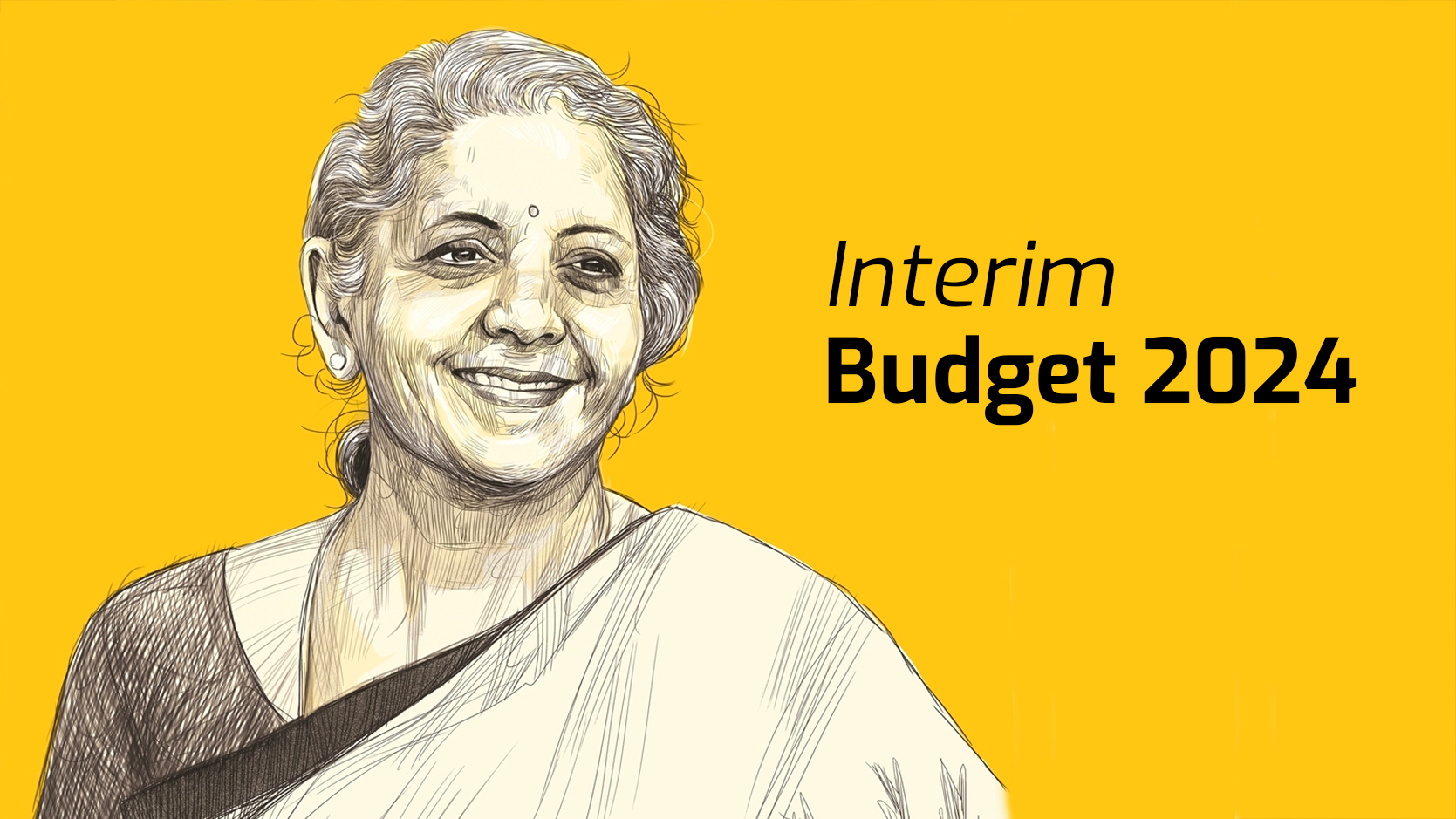A critical message for the urban elite
Why in the News?
Our technology-enabled ecosystem could be making our cities unliveable.
Overview
The article highlights how urban heat waves worsen due to poor urban planning, with privileged communities shielded by technology, while marginalized groups suffer from inadequate design and extreme weather impacts.
What Is an Urban Heat Island?
An urban heat island occurs when a city experiences much warmer temperatures than nearby rural areas. The difference in temperature between urban and less-developed rural areas is due to how well the surfaces in each environment absorb and hold heat.
Record-breaking Heatwaves
- In 2024, India witnessed unprecedented heatwaves, with temperatures in Delhi surpassing 50°C.
- Over 200 official deaths due to heatwaves, with many unrecorded.
Urban Heat Island (UHI) Effect
Urban heatwaves are more severe due to the UHI effect, where cities are significantly warmer than rural areas. The UHI effect is driven by carbon-emitting activities and poor urban planning. Concrete, asphalt, and glass structures trap heat, increasing energy consumption and discomfort.
Impact on Marginalized Communities
The marginalized communities face extreme heat exposure while working outdoors. These communities lack access to adequate shade, hydration, or relief, amplifying their vulnerability.
Vicious Cycle of Disengagement
As heat waves worsen, people are driven indoors, further increasing reliance on technology. This cycle reduces the demand for improvements in public infrastructure, making cities less livable for everyone, especially the vulnerable.
Role of the Urban Elite in Driving Change
The article emphasizes the need for the urban elite to reconnect with their environment and leverage their influence to push for better urban governance and livable spaces.
Conclusion: The Need for Reconnection
To address these challenges, the article calls for a reconnection between the urban elite and their environment. The elite must recognize their privilege and use it to advocate for equitable and livable urban spaces. Failure to do so will only worsen the urban heat crisis, deepen social inequalities, and create unlivable cities.
Way Forward
- Revamp Urban Planning: Introduce green spaces and energy-efficient buildings. Address the UHI effect through better city designs.
- Public Awareness: The elite need to actively engage with city issues and demand improvements.
- Technological Adaptation: Leverage technology to enhance sustainability, not detach from urban issues.
Scuttling people’s right to information
Why in News?
There is a severe backlash against the RTI Act, which has just entered its 20th year, and against those who use it.
Right to Information Act, 2005
It is one of the most transformative laws for empowering Indian citizens. It has been instrumental in exposing corruption, improving transparency in governance, and ensuring accountability. However, despite its success, the Act has faced several challenges, including political resistance and operational inefficiencies.
Issues with RTI Implementation
- Bureaucratic Resistance
- Lack of Awareness
- Information Commission Backlogs
- Insufficient Infrastructure
- Threats and Harassment
- Amendments and Restrictions
- Excessive Redactions
Role of the Central Information Commission (CIC)
The Central Information Commission (CIC) plays a pivotal role in enforcing the RTI Act. It is a statutory body, not a constitutional one, and oversees RTI-related matters in Central Government offices and Union Territories (UTs).
Functions of CIC
- Investigates complaints and appeals regarding RTI applications.
- Monitors compliance with the RTI Act.
- Ensures transparency and accountability within central government organizations.
Aspect
| Details | Information |
|---|---|
| Headquarters | New Delhi |
| Composition | A Chief Information Commissioner and up to 10 Information Commissioners. |
| Appointment | Commissioners are appointed by the President based on the recommendations of a committee comprising: the Prime Minister, Leader of Opposition in Lok Sabha, and a Union Cabinet Minister. |
| Tenure | Information Commissioners serve until the age of 65 but are not eligible for reappointment. |
Challenges to RTI’s Effectiveness
- Operational Inefficiencies: Vacant commissioner positions result in delays in addressing appeals and complaints, especially in states like Maharashtra.
- Political Resistance: The 2019 amendments weakened the independence of Information Commissions, giving the central government control over the salaries and tenure of Information Commissioners.
- Threats to Activists: Over 100 RTI activists have lost their lives, and many more face threats or harassment, discouraging citizens from exercising their right to information.
Way Forward
To strengthen the RTI Act:
- Ensure Full Staffing of Information Commissions: Fill vacant posts of commissioners and reduce the backlog of appeals and complaints.
- Protect RTI Activists: Implement stronger legal safeguards to protect RTI users from threats and harassment.
- Re-establish Independence of Information Commissions: Rollback amendments that compromise the autonomy of the Central and State Information Commissions.
- Promote Awareness: Increase awareness and training to ensure that citizens and government officials understand the significance of the RTI Act.
What is Wayanad’s new X-band radar? | Explained
Why in News?
Doppler radar tracks objects using the Doppler effect. Wayanad requires an X-band radar for weather monitoring, with India’s first installed in 2019 and procurement increasing.
Introduction
In the wake of devastating floods and landslides that claimed over 200 lives in Kerala’s Wayanad district in July 2024, the Union Ministry of Earth Sciences has approved the installation of an X-band radar in the region. This initiative aims to enhance weather monitoring capabilities and improve disaster preparedness.
What is Radar?
Radar, short for Radio Detection and Ranging, employs radio waves to determine the distance, velocity, and physical characteristics of objects. It operates through a transmitter that emits a signal aimed at a target, such as clouds. The device then receives the echoed signal, allowing for analysis.
How Does Doppler Radar Work?
Doppler radar is a specialized type of radar commonly used in meteorology. It utilizes the Doppler effect, which measures the change in frequency of waves due to the movement of objects relative to the radar. This technology allows meteorologists to detect the speed and direction of weather phenomena, such as rainfall and storm systems.
Pulse-Doppler Radar: Measures rainfall intensity by emitting pulses and tracking their reflection frequency.
What is X-Band Radar?
X-band radar operates within the electromagnetic spectrum at frequencies between 8-12 GHz (wavelengths of 2-4 cm). This allows for higher resolution imaging of smaller particles, such as raindrops and soil. However, due to its higher frequency, X-band radar has a shorter detection range compared to lower frequency systems.
Radar Type
| Frequency Range | Applications |
|---|---|
| X-Band (8-12 GHz) | High-resolution weather monitoring |
| S-Band (2-4 GHz) | Long-range detection and storm tracking |
Importance of X-Band Radar in Wayanad
The installation of the X-band radar in Wayanad aims to monitor soil movement and enhance landslide warning systems. Its rapid sampling capabilities will enable the detection of particle movements over shorter time spans, providing critical data for early warning systems.
Historical Context
India has a rich history of radar usage for meteorological applications:
- First X-Band Radar: Installed in 1970 in New Delhi.
- First S-Band Radar: Commissioned in 1970 in Visakhapatnam.
Current Developments
As of September 2024, the Ministry of Earth Sciences announced plans to expand India’s radar network significantly:
- 56 Additional Doppler Radars: To be installed within a few years.
- Mission Mausam: A ₹2,000-crore initiative aimed at upgrading meteorological infrastructure, including 60 new radars by 2026.
- The government is also moving to procure and install 10 X-band Doppler radars for enhanced weather forecasting in northeastern states.
Collaborative Efforts in Earth Monitoring
NISAR (NASA-ISRO Synthetic Aperture Radar) is a collaborative satellite project between NASA and the Indian Space Research Organisation (ISRO). It aims to produce high-resolution maps of Earth’s landmasses using advanced radar technology.
- Payload: L-band radar by NASA & S-band by ISRO
- Launch Year: Expected in 2025
Conclusion
The establishment of the X-band radar in Wayanad is a significant step towards improving disaster management and weather forecasting capabilities in India. With ongoing enhancements to the country’s radar network, including the collaboration on NISAR, India is poised to strengthen its ability to monitor and respond to natural disasters.
Ladakh aurorae validate space weather tracking efforts, scientists say
Why in News?
While aurorae are known for their scenic beauty, their occurrence in lower-latitude regions like Ladakh is an indication of heightened solar activity.
Introduction
A rare red aurora in Ladakh in October 2024 indicates increased solar activity, validating Indian scientists’ space weather predictions and showcasing India’s advancements in monitoring solar storms and satellite protection.
Event
| Details | Information |
|---|---|
| Location | Hanle Dark Sky Reserve, Ladakh |
| Aurora Type | Red-colored aurora |
| Cause | Solar storms due to coronal mass ejections (CMEs) |
| Key Predicted Impact | Potential disruption to satellite-based communication and navigation systems |
Solar Activity and Aurora Formation
Aurorae form when charged particles from the Sun interact with the Earth’s magnetosphere. This results in the emission of light in the form of colorful streamers, often visible in high-latitude regions. However, the appearance of auroras in lower-latitude regions, such as Ladakh, signifies heightened solar activity, particularly during Solar Cycle 25.
- Aurora Mechanism: Charged solar particles collide with Earth’s magnetic field, releasing energy and creating vivid light displays.
- Low-Latitude Occurrence: Auroras in regions like Ladakh, Mexico, and Germany indicate stronger solar storms.
Solar Storms: Nature and Prediction
Solar storms, particularly Coronal Mass Ejections (CMEs), occur when the Sun’s magnetic field intensifies. These storms can trigger aurorae and interfere with satellite-based services. The Indian team at the Center of Excellence in Space Sciences India (CESSI) predicted the recent solar storm, enhancing confidence in India’s space weather tracking abilities.
- Solar Cycle Duration: The Sun’s magnetic field intensifies and weakens in an 11-year cycle. Solar Cycle 25, which began in 2019, is currently at its peak.
Conclusion
Auroras, while visually spectacular, also serve as a reminder of the powerful forces at play in our solar system. The sightings in Ladakh emphasize the need for continuous monitoring of solar activity and robust predictive models. As solar storms grow in intensity, their potential to disrupt modern life necessitates improved space weather preparedness.
Issues in the treatment of ‘rare diseases’, and what the govt can do
Why in News?
Rare disease drugs are costly due to patents and limited market profitability. Manufacturing them in India could reduce prices, but government intervention is needed to encourage production.
Introduction
Rare diseases affect fewer than 1 in 1,000 people. The Delhi High Court’s direction on orphan drugs emphasizes the need for reforms in India’s rare disease treatment, with 55 conditions identified.
Classification of Rare Diseases
In India, rare diseases are classified into three groups based on their treatment options:
| Group | Nature of Treatment |
|---|---|
| Group 1 | Diseases curable with one-time procedures. |
| Group 2 | Diseases requiring long-term treatment, but relatively affordable and with documented benefits. |
| Group 3 | Diseases with effective, but lifelong and expensive treatments. Selecting beneficiaries is a challenge. |
National Policy for Rare Diseases (NPRD) 2021
To address the treatment gap, the NPRD was introduced in 2021. The policy provides financial assistance to patients and focuses on Centres of Excellence (CoEs) across India.
Future Steps and Recommendations
- Boost Domestic Manufacturing: Encouraging domestic production of rare disease drugs by providing tax breaks and other incentives to pharmaceutical companies could significantly reduce treatment costs.
- Address Delays: Regulatory delays in the approval of critical drugs need to be minimized, as seen in the delay for Sarepta Therapeutics’ approval.
- Promote R&D: Increased research and development (R&D) efforts are necessary to foster innovation in rare disease treatments.
- Policy Adjustments: The government should revisit exemptions on orphan drugs from price control to ensure affordability.
Conclusion
The treatment of rare diseases in India faces multiple hurdles, ranging from high drug costs to limited access to treatments. Government intervention through policy reforms, increased R&D, and incentivizing domestic drug production can help mitigate these challenges and make treatments more accessible.
What are ‘dragon drones’, the latest weapon being used in Russia-Ukraine war?
Why in News?
A deadly new weapon in the Russia-Ukraine War, dragon drones are known to emit a molten metal that burns at 2,427 degrees Celsius, essentially raining down fire.
What are Dragon Drones?
Dragon drones are equipped with thermite, a mixture of aluminum and iron oxide, which was initially developed over a century ago to weld railroad tracks. When ignited, it causes a self-sustaining chemical reaction that can burn through nearly any material, including military vehicles, structures, and even underwater objects.
Thermite Composition
| Component | Role |
|---|---|
| Aluminium | Acts as a fuel |
| Iron Oxide | Provides oxygen to sustain combustion |
Legal Implications of Thermite Use
Under international law, the use of thermite is not prohibited, but it comes with restrictions. The Convention on Certain Conventional Weapons (CCW), specifically Protocol III, limits the use of incendiary weapons like thermite to military targets only. Using such weapons on civilians or non-combatant areas is illegal due to their potential to cause severe burns and respiratory injuries.
CCW Protocol III: Protocol on Prohibitions or Restrictions on the Use of Incendiary Weapons (1980)
Protocol III is part of the Convention on Certain Conventional Weapons (CCW), also known as the Inhumane Weapons Convention. It was adopted in 1980 to regulate the use of incendiary weapons during armed conflicts. Incendiary weapons are designed to set fire to objects or cause burns to people through the action of flame, heat, or a combination thereof.
India’s Position
India is a party to the CCW but has not ratified all its protocols. India is focused on maintaining compliance with international humanitarian law, particularly in conflict zones, while balancing military necessities.
Key Issues in Using Dragon Drones
- Precision Targeting: The thermite used in dragon drones can bypass traditional defenses, increasing its tactical advantage.
- Indiscriminate Nature: Despite its effectiveness, thermite’s indiscriminate nature raises concerns about collateral damage, especially when targeting vegetation or non-combat zones.
- Potential Violations: Using these weapons in civilian areas could potentially lead to violations of international law.
China, India and New Delhi’s Quad dilemma
Why in News?
It would be prudent for India to proceed with care in its dealings with China on the one hand and with its Quad partners on the other.
Key Facts
| Details | |
|---|---|
| Quad Members | Australia, India, Japan, United States |
| Recent Meeting | September 2024 Quad Summit (U.S.) |
| Wilmington Declaration | Implied focus on containing China in the Indo-Pacific without explicit mention |
The Wilmington Declaration: Joint Statement from Quad Leaders
- Indo-Pacific Vision: Commitment to a free, open, and inclusive Indo-Pacific, reinforcing regional stability and rules-based order.
- Security Cooperation: Strengthened maritime security, cyber security, and counter-terrorism efforts. Focus on sovereignty and territorial integrity, especially against coercive actions.
- Emerging Technologies: Collaboration on critical technologies like 5G, AI, and quantum computing. Building resilient supply chains, especially in semiconductors.
- Climate and Clean Energy: Joint efforts on climate action and promoting renewable energy in the Indo-Pacific region.
- Health Security: Quad Vaccine Partnership and enhanced global health preparedness for future pandemics.
- Economic and Infrastructure Development: Focus on transparent investments and infrastructure projects to counter the Belt and Road Initiative (BRI).
India-China Relations: Deteriorating Ties
- Border Disputes: Despite talks, no progress has been made in disengaging troops in areas like Depsang Plains and Demchok.
- Military Posturing: Both nations continue to build military capabilities along the Line of Actual Control (LAC). India perceives the situation as ‘stable but sensitive,’ while China seems undisturbed, relying on its significantly larger defense budget.
Quad’s Increasing Strategic Significance
Quad’s Prospects
- Key Focus Areas:
- Strengthening regional security
- Ensuring freedom of navigation, and a rules-based international order in the Indo-Pacific.
- Countering China’s influence
- Preventing China from altering the regional status quo.
- Maritime security
- Conducting joint naval exercises to enhance security capabilities.
India’s Diplomatic Dilemma
India’s Challenges
- Strategic Considerations:
- Managing ties with China
- Avoiding a direct confrontation while strengthening border defenses.
- Balancing Quad relationships
- Not being seen as aligning too closely with U.S.-led efforts to encircle China.
- China’s aggressive nationalism: China’s foreign policy approach poses challenges for regional stability.
Conclusion
India faces a complex geopolitical challenge in managing its relations with China and its Quad partners. The Quad, increasingly seen as a strategic alliance, poses both opportunities and risks for India. As China’s perception of the Quad as a U.S.-sponsored threat grows, India must strike a delicate balance, ensuring it doesn’t provoke China while maintaining strategic independence and contributing to regional stability. India’s future lies not in checkmating China’s ambitions but in navigating these challenges wisely.
India at ASEAN: Turning to the East
Why in News?
Amid escalating conflicts on the global stage, ASEAN faces external and internal challenges. There is a new edge to Delhi’s regional role.
Background
The Association of Southeast Asian Nations (ASEAN) has been navigating complex challenges both internally and externally, amid escalating global conflicts and shifting power dynamics. Recently, ASEAN held its 11th annual meetings in Laos, attended by key partners including India.
- Milestones: Two significant anniversaries
- 30th anniversary of India’s “Look East” policy (1994).
- 10th anniversary of the “Act East” policy (2014).
Global Context: The geopolitical landscape in Asia has shifted significantly since the late 1990s, marked by:
- Increased great power rivalry, particularly between the US and China.
- China’s assertiveness in regional maritime disputes, notably in the South China Sea.
- Economic de-globalization, affecting ASEAN’s historical reliance on US-China commercial ties.
Challenges Facing ASEAN
| Challenge | Description |
|---|---|
| External Pressures | Rising tensions between great powers, especially China and the US. |
| Internal Disruptions | Ongoing instability in Myanmar due to military junta governance. |
| Economic Challenges | De-globalization impacting ASEAN’s economic growth. |
India’s Position in ASEAN
India’s relative standing in the region has improved due to its economic progress and military advancements. Key points include:
- Strategic Alliances: Active participation in the Quad (with Australia, Japan, and the US) has reinforced India’s regional influence.
- Military Cooperation: Enhanced bilateral military partnerships, particularly with the Philippines, demonstrate India’s commitment to regional security.
- Firm Stance on China: China’s expansionist policies, advocating for adherence to the Law of the Sea in maritime disputes, signals a more assertive Indian foreign policy.
Strategic Recommendations for India
To effectively enhance its role in East Asia, India should consider the following strategies:
- Trade Policy Reformation: Addressing trade imbalances and enhancing economic collaboration by removing barriers to trade.
- Strengthening Regional Ties: Fostering deeper connections with ASEAN nations through diplomatic initiatives and economic partnerships.
- Internal Challenges: Engaging in dialogues to tackle internal obstacles within ASEAN, particularly addressing the instability in Myanmar.
Conclusion
India’s growing engagement with ASEAN marks a strategic shift towards the East, aiming to adapt to global dynamics and regional challenges by leveraging its economic growth and military capabilities for stability and cooperation.
Editorial: The Problem with the Right to Free Food
Why in News?
Regime of highly ineffective food and fertiliser subsidies must be reformed. Government needs to summon the courage to bite the bullet, ensuring enough lead time to prepare for proper implementation.
World Food Day and Right to Food
World Food Day: Observed on October 16 by the Food and Agriculture Organisation (FAO), it is a reminder of global efforts to eliminate hunger and malnutrition. The theme of FAO’s World Food Day is “Right to Foods for a Better Life and a Better Future.”
Right to Food: Introduced by the National Food Security Act (NFSA) 2013, it aims to cover 2/3rds of the Indian population with heavily subsidized food grains (wheat, rice, coarse grains). However, this blanket distribution is economically questionable.
Critique of Blanket Subsidies
Despite poverty declining from 29.13% in 2013-14 to 11.28% in 2022-23 (NITI Aayog’s Multi-dimensional Poverty Index), the government continues to provide free food to more than 800 million people. Excessive subsidization of food and fertilizers is termed economically irrational as it hinders more productive investments in sectors like agri-R&D, education, and sanitation.
Need for Reform
The article suggests that free food should only be reserved for the most vulnerable 15% of the population, while others should pay at least part of the cost. Food subsidies and fertilizer subsidies are plagued by leakages and inefficiencies, with ICRIER research showing that 25-30% of resources do not reach intended beneficiaries, leading to further loss.
Solutions for Reform
Digitisation of the agri-food system can pave the way for a more rational and robust system, helping India achieve the Zero Hunger goal under the Sustainable Development Goals (SDGs) by 2030. Reforms should prioritize investments in precision agriculture, micro-nutrients, climate-resilient farming, and women’s education, which are 10 times more effective than blanket subsidies.
Conclusion
The author calls for bold reforms in India’s food and fertilizer subsidy regimes. By addressing inefficiencies and leakages, digitizing the agri-food system, and limiting subsidies to the most vulnerable populations, India can create a more sustainable and equitable agriculture sector that addresses malnutrition, food security, and climate resilience.
Take the Gauntlet: On Safety and the Indian Railways
Why in News?
‘Kavach’ implementation is a priority but will not be a silver bullet.
Overview
A recent train collision in Kavaraipettai near Chennai highlights growing concerns over railway safety in India, especially amid a spate of recent accidents across zones.
Kavach System: Enhancing Railway Safety
| Feature | Details |
|---|---|
| Launch Year | 2020 |
| Developer | Research Design and Standards Organisation (RDSO) in collaboration with Indian vendors |
| Purpose | National Automatic Train Protection (ATP) system with anti-collision features |
| Standard | Safety Integrity Level-4 (SIL-4) standards |
| Key Functionality | Prevents signal overshoot by automatically applying brakes when a train approaches a red signal |
| Technology | Integration of Radio Frequency Identification (RFID) technology in tracks and locomotive cabins |
| Key Infrastructure | RFID readers, onboard computers, brake interface systems, and radio towers/modems installed at railway stations |
| Future Prospects | Nationwide implementation could be achieved in a decade, requiring just 2% of annual capex |
Functionality Breakdown
- Radio Frequency Identification (RFID): Tracks equipped with RFID technology to communicate with locomotives and signal systems.
- Locomotive Equipment: The driver’s cabin is fitted with RFID readers and a computer system, allowing real-time monitoring and automatic braking in case of signal violations.
- Radio Infrastructure: Communication towers and modems installed at stations to enhance connectivity and operational efficiency across the network.
Committees Recommendations
- Kakodkar Committee (2012):
- Adopting advanced technologies for track maintenance and inspection
- Improving human resource development and management
- Bibek Debroy Committee (2014):
- Separating the railway budget from the general budget
- Outsourcing non-core activities
- Creating a Railway Infrastructure Authority of India
- Vinod Rai Committee (2015):
- Establishing an independent Railway Safety Authority with statutory powers
- Setting up a Railway Accident Investigation Board to conduct independent and impartial inquiries.
- Creating a separate Railway Infrastructure Company to own and maintain railway assets.
Conclusion
The Kavach system, though promising, is not a standalone solution. Improving working conditions, addressing financial vulnerabilities, and investing in a comprehensive modernization plan are essential steps to ensure long-term safety and operational efficiency across the railway network.
Array




